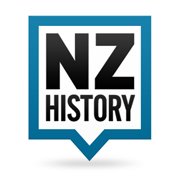‘The Dictionary of New Zealand Biography, redux’
Description
The Dictionary of New Zealand Biography was originally published in five print volumes between 1990 and 2000. It comprised 3000 biographical essays about a wide range of deceased New Zealanders who had come to prominence by 1960. The Dictionary went online in 2001. In 2010 it was merged with Te Ara: the Encyclopedia of New Zealand to form the single largest reference work on New Zealand's history and society https://teara.govt.nz/en/biographies
The combined Dictionary and Te Ara website is one of the largest works of scholarship ever undertaken in this country, and is unique in the world.
Since 2000 The Dictionary has been in hiatus, with the exception of a batch of 15 biographies that were published online in 2010-11. In 2017 the Ministry for Culture and Heritage decided to resume work on the Dictionary, and to publish a new batch of biographies online every year. The new programme commences with 20 new biographies of women which will be published in September this year to celebrate the 125th anniversary of women’s suffrage.
In this presentation, senior historian Tim Shoebridge - the Dictionary’s programme manager, will speak about the challenges posed and opportunities offered by this new chapter in the Dictionary’s life.
These monthly Public History Talks are a collaboration between the National Library of New Zealand https://natlib.govt.nz/ and the Ministry for Culture and Heritage https://mch.govt.nz/
Recorded live at the National Library of New Zealand, 6 June 2018.
More Episodes
The new book Secret History: State Surveillance in New Zealand, 1900-1956 by Richard S Hill and Steven Loveridge (Auckland University Press, 2023) opens up the ‘secret world’ of security intelligence during a period in which counter-espionage and counter-subversion duties were primarily handled...
Published 11/15/23
Published 11/15/23
Forced labour haunts the streets we walk today and the spaces we take for granted. From 1814 onwards, the unfree work of prisoners was used to forge roads, ports, buildings, harbour defences and other public works across New Zealand and its Pacific empire. Prisoners planted forests, cleared land...
Published 10/27/23


